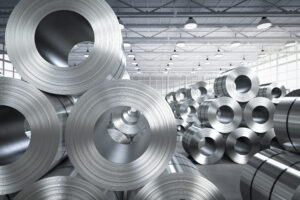Are you happy with your enterprise resource planning (ERP) system? Does it meet the current needs of your business, and will it continue to meet those needs as you scale the company? These are all vital questions, and they’re ones that many organizations in the steel and metal industry ask themselves as they seek to take the next step forward.
Selecting a new ERP system is not to be taken lightly, but an evaluation process is key to understanding whether your current system is sufficient or a new solution is required.
Here’s how to evaluate your ERP software and prepare for the next steps:
Build an Evaluation Team
The first step is to build an evaluation team that will oversee the evaluation process. The team should consist of experts across various departments, including purchasing, procurement, and operations. Involve the team in every step of the process and make sure all aspects of the business are covered.
Don’t focus too much on IT professionals. ERP may be integrated into your IT infrastructure, but it will impact every process and department, so don’t limit yourself to hiring only those well-versed in IT.
Create Scenarios to Ensure Your Needs Are Met
It’s time for your evaluation team to consider how current and future processes are impacted by ERP systems. They should run through a few scenarios that the business regularly faces and then consider the effects of current ERP solutions and the potential impact of future upgrades on those processes.
Try to cover as many aspects of the business as possible to provide a comprehensive analysis. For a company in the metals industry, considerations may include things such as:
- Multi-line processing
- Coil processing
- Metal Fabrication
- Metal Framing
These scenarios can help you visualize and analyze the effects of ERP integration on the day-to-day operation of your business.
Check That You’re Utilizing its Full Capabilities
Just because an ERP system can perform certain functions doesn’t mean it will. Consider how complicated it is to make those features a reality—do they need to be programmed? Do you need additional components or other resources? Can you take actionable steps right now, or is it something that will be delayed until a later date?
If it’s able to do what you need it to do, make sure you see it in action. You don’t want to be told that it’s capable, you want to see it for yourself.
Consider Your Software Needs
An ERP system should be a complete solution to all of your company’s daily requirements. It should incorporate precision automation, real-time operational insights, inventory management, accounting, and more. It must also include the specific features and components needed to optimize operations from the ground up. Some of the programs incorporated into a comprehensive ERP system for the steel and metals industry include:
- Steel service center software
- Steel nesting software
- Metals nesting software
- Coil splitting software
- Metals optimization software
Technological Considerations
Now that you have considered how ERP solutions impact the running of your business, you need to think about how they will be integrated and maintained:
- Do you need to install servers, or is the software cloud-based?
- What operating systems, databases, and other platforms does it use?
- What kind of setup assistance and ongoing support will be available?
- Does the system work across all of the devices and platforms used by your business?
- Will you be adequately protected against external threats, such as malware?
- Can you store large datasets in the system, and are you able to retrieve this information quickly?
Calculate the Cost
How much does the system cost? What are the ongoing fees? Are there any indirect costs, such as downtime and staff training? More importantly, can you justify this cost and benefit for all of the features, or are you paying for something you don’t need and can’t use?
Look to Future
ERP systems, like all software solutions, require ongoing maintenance and regular updates. We live in fast-moving times—what’s game-changing and innovative today could be obsolete tomorrow. So, in addition to considering how the ERP system will help your business now, think about how it will grow with you and if it can adapt to your changing needs.
Other Tips for Evaluating an ERP System
- Focus on what makes you unique: Rather than relying on standard checklists to determine the benefits of an ERP solution, focus on the things that make your business unique.
- Make sure required features are actually available: You can’t rely on anything that is slated to launch at a later date. If those features will support your business, you need them now, not later.
- Consider your return on investment (ROI): A specific ERP system may be beneficial, but is it financially viable? Will it actually improve your bottom line and provide a generous ROI?
Make Your Decision
Once you have completed all of the above steps, it’s time to make your decision. Consult with your evaluation team, take all of the above into account, and give yourself plenty of time to ensure you’re making the right decision.
If you decide to opt for a new system, it’s time to enter the negotiation phase and try to secure a deal that is realistic for your needs and budget, considering both the present and the future.
Switch to RealSTEEL for a Tailormade ERP System
A properly integrated and fully functional ERP system can be a game-changer for your business. It should be tailored to suit your individual needs and capable of scaling along with your company. With RealSTEEL, you get all of these benefits and more.
We specialize in ERP solutions for the steel and metal industry. Our software is designed for your business, and as you only use what you need, you don’t have to worry about escalating costs and can scale as quickly or slowly as you need without impacting functionality.
Contact us today to discover how RealSTEEL can support your business. Join a long list of companies in the metals sector that have adopted this state-of-the-art solution.




